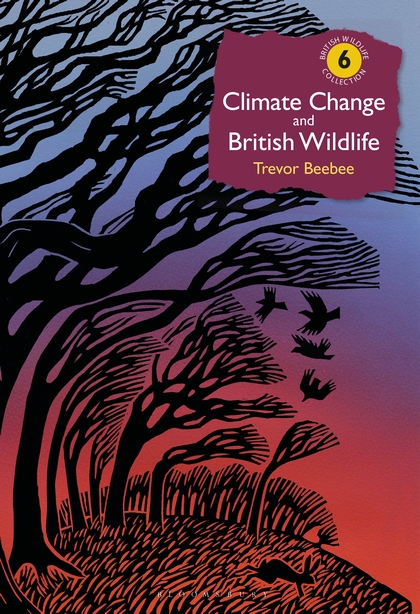Climate Change and British Wildlife
- Climate Change and British Wildlife by Trevor Beebee (Bloomsbury Wildlife, London, 2018).
- 368 pages, 260 colour photos and illustrations.
- ISBN 9781472943200. Hbk, £35.
- Bookshop from £31.99
Set to affect us all increasingly as we progress through the 21st century, climate change is a colossal and complex subject, with a seemingly infinite list of possible outcomes.
The uncertainty surrounding its collective impact on all life on Earth, incorporating direct and secondary affects, is still poorly understood. However, current effects and future repercussions are being intensively studied by scientists worldwide as we, as a species, attempt to obtain a grasp of what is likely to happen as we go forward – and therefore mitigate against any adverse effects that our changing climate may throw our way.
Britain is in the fortunate position that it has "the longest history of wildlife recording anywhere in the world", as Trevor Beebee writes in his new book, Climate Change and British Wildlife. This therefore stands Brits in the best possible position to observe how our own flora and fauna has already responded, is currently responding and will almost certainly respond as we go into the 2020s and beyond.
Even on a national scale – in the case of Beebee's book, examining England, Wales and Scotland – climate change is a devilishly complicated issue, sometimes teetering out on the realms of what appears possible for the human brain to process and understand. Many observed changes have not been linear (that is, they have been more pronounced in one area compared to another), while some species have been more affected than others, when sense might suggest that the opposite should have been the case. So, how do you successfully distil such a huge and convoluted topic into something manageable – even enjoyable – to read?
Therein lies one of the great qualities of Climate Change and British Wildlife. Beebee does a brilliant job of summarising the observed and possible future effects of climate change on wildlife in an organised, methodical manner. It is easy to feel almost hysterical when contemplating climate change as its endless connotations chaotically spin out of control in one's head, yet Beebee writes with authoritative calmness and patience. The first chapter, 'What's going on?', provides a general overview of ways that climate change could affect wildlife across Britain, but also highlights how we should be tentative, rather than bullish, when making such links, as there are often unforeseen factors at work that may only come to the surface at a subsequent time.
After this Beebee individually addresses the impacts on species within various kingdoms and phyla, commencing with plants before moving to invertebrates, including the familiar butterflies and damselflies, as well as crickets – themselves some of the great beneficiaries of observed climate change so far in Britain – bugs, flies and other insects. Then come the vertebrates, including reptiles and amphibians, birds and mammals, before an in-depth look at fungi, lichens and microbes. Following this, the author 'zooms out' once more to assess impacts at habitat level, focusing on the changes in ecology within certain environments and ecosystems. Suffice to say, no stone is left unturned.
While the links between ecological changes and climate change are undeniable, one of the consistent themes thrown up by the book is that ongoing habitat fragmentation and loss and the intensification of agriculture is itself just as much a problem across Britain. It is a sad fact that our biodiversity is among the most depleted of any country in the world, with relentless exploitation of the land devastating our wildlife over several generations. Unfortunately, in this vulnerable state, the effects of climate change only tend to be exacerbated, as the author repeatedly points out.
For anyone interested in natural history, Climate Change and British Wildlife is a hugely important read. A painstaking volume of research has evidently been invested in producing this book, with the author's own decades of observation and expertise also playing their part. Purely for its topic, this was always going to be a difficult book to write. It has to be acknowledged that Beebee has done a brilliant job of capturing the hard facts of science within this book, yet presenting what could easily prove an exhausting topic in an insightful and compelling manner – even if it is disconcerting to read of what the future may hold for Britain's often imperilled wildlife. It comes thoroughly recommended.



